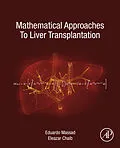Provides a mathematical approach to the optimization of liver grafts distribution
Presents mathematical and computational methods for several aspects relating to organ allocations and discusses possible solutions
Encompasses optimization models for the best organ distribution strategy to support decision-makers that are responsible for liver and other organ transplantation policies
Eduardo Massad is Fellow of the Institute of Mathematics and its Applications, Chartered Mathematician (IMA-UK), Chartered Scientist (SciCoun-UK), and Fellow of the Royal Society of Medicine. He has almost 40 years of experience in applying mathematical methods to medical problems and is co-editor of the Elsevier's book Global Health Informatics: How Information Technology Can Change Our Lives in a Globalized World.
Autorentext
Eduardo Massad is Fellow of the Institute of Mathematics and its Applications, Chartered Mathematician (IMA-UK), Chartered Scientist (SciCoun-UK), and Fellow of the Royal Society of Medicine. He has almost 40 years of experience in applying mathematical methods to medical problems and is co-editor of the Elsevier's book Global Health Informatics: How Information Technology Can Change Our Lives in a Globalized World.
Klappentext
Mathematical Approaches to Liver Transplantation provides mathematical approaches to the optimization of liver graft distribution. Through mathematical and computational methods, several aspects related to organ allocation are tackled, with possible solutions presented. The book discusses topics such as patient selection for liver transplantation, transplantation procedures, dynamics of organs waiting list, improvement on grafts allocation, live donors and MELD scale. The content focuses on liver transplantation, however the mathematical approaches presented can be successfully replicated to different organs. This book is a valuable source for mathematical biologists, bioinformaticians, and several members of biomedical field who are involved in decision-making related to organs transplantation.
- Provides a mathematical approach to the optimization of liver grafts distribution
- Presents mathematical and computational methods for several aspects relating to organ allocations and discusses possible solutions
- Encompasses optimization models for the best organ distribution strategy to support decision-makers that are responsible for liver and other organ transplantation policies
Inhalt
1. Introduction 2. History of liver transplantation 3. Patient selection for liver transplantation 4. Transplantation procedure 5. The dynamics of waiting list 6. Improving grafts allocation 7. Donors after circulatory death 8. Live donors liver transplantation 9. The MELD scale
